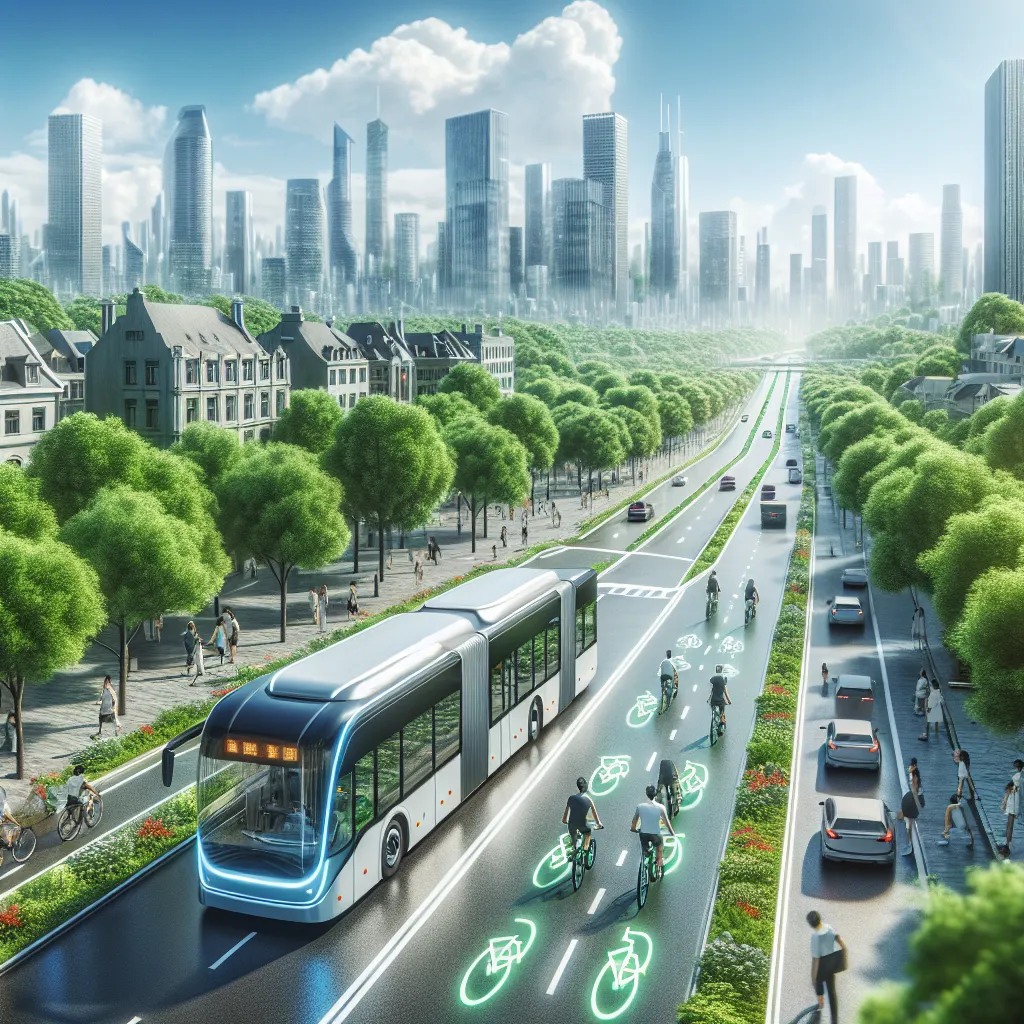Public transportation and its impact on carbon reduction is a topic that has gained significant traction in recent IELTS examinations. Based on an analysis of past exam trends and current global concerns, it’s highly likely that this theme will continue to appear in future tests. Let’s explore a relevant question that mirrors the style and complexity of actual IELTS Writing Task 2 prompts.
Some people believe that improving public transportation is the best way to reduce carbon emissions in cities. To what extent do you agree or disagree with this statement?
Analyzing the Question
This question requires you to consider the effectiveness of public transportation in reducing carbon emissions compared to other potential solutions. Key points to address include:
- The role of public transportation in urban environments
- The impact of public transport on carbon emissions
- Other possible methods of reducing carbon emissions in cities
- Your personal stance on the effectiveness of public transportation in this context
Sample Essay
Here’s a model essay that addresses the question effectively:
In an era where climate change is at the forefront of global concerns, cities are increasingly focusing on strategies to reduce their carbon footprint. While some argue that enhancing public transportation systems is the most effective approach to curbing urban carbon emissions, I believe that while it is indeed a crucial factor, it should be part of a more comprehensive strategy rather than the sole solution.
Undoubtedly, improving public transportation can significantly contribute to reducing carbon emissions in urban areas. Efficient and widely accessible public transit systems encourage people to leave their private vehicles at home, thereby decreasing the number of cars on the road. For instance, cities like Copenhagen and Amsterdam have demonstrated how investing in extensive public transportation networks, including buses, trains, and bicycle lanes, can lead to a substantial reduction in car usage and, consequently, lower carbon emissions. Moreover, as technology advances, the introduction of electric buses and trains further minimizes the carbon footprint of public transportation itself.
However, while public transportation is a vital component in the fight against urban carbon emissions, it should not be considered the only or even the primary solution. There are several other equally important strategies that cities must employ to effectively tackle this issue. For example, promoting renewable energy sources for powering buildings and infrastructure can have a massive impact on a city’s overall carbon output. Additionally, implementing stricter building codes to ensure energy efficiency in both new constructions and renovations can lead to significant reductions in emissions from the urban built environment.
Furthermore, encouraging behavioral changes among city dwellers is crucial. This includes promoting recycling, reducing waste, and supporting local, sustainable food production. These initiatives, while not directly related to transportation, play a substantial role in a city’s overall carbon reduction efforts. Cities like San Francisco have shown how comprehensive waste management programs can dramatically decrease greenhouse gas emissions.
In conclusion, while I agree that improving public transportation is an essential strategy for reducing carbon emissions in cities, I do not believe it is the sole best way. A holistic approach that combines enhanced public transit with renewable energy adoption, improved building efficiency, and citizen engagement in sustainable practices is likely to yield the most significant and lasting results in urban carbon reduction. Cities must therefore adopt a multifaceted strategy to effectively address this complex environmental challenge.
(Word count: 367)

Key Points to Remember When Writing
-
Structure: Ensure your essay has a clear introduction, body paragraphs, and conclusion. Each paragraph should focus on a single main idea.
-
Balance: While expressing your opinion, acknowledge the opposing viewpoint to demonstrate a balanced perspective.
-
Examples: Use specific examples to support your arguments. This adds credibility to your writing.
-
Coherence: Use linking words and phrases to ensure smooth transitions between ideas and paragraphs.
-
Vocabulary: Employ a range of vocabulary related to the environment and urban planning. Avoid repetition by using synonyms.
Essential Vocabulary for This Topic
- Carbon emissions (n.) /ˈkɑːbən ɪˈmɪʃənz/ – the release of carbon dioxide into the atmosphere
- Public transportation (n.) /ˈpʌblɪk trænsˌpɔːˈteɪʃən/ – modes of transport available to the public, typically operated on fixed routes
- Sustainable (adj.) /səˈsteɪnəbəl/ – able to be maintained at a certain rate or level without depleting natural resources
- Infrastructure (n.) /ˈɪnfrəˌstrʌktʃər/ – the basic physical and organizational structures needed for the operation of a society
- Renewable energy (n.) /rɪˈnjuːəbəl ˈenədʒi/ – energy from a source that is not depleted when used
- Carbon footprint (n.) /ˈkɑːbən ˈfʊtprɪnt/ – the amount of carbon dioxide released into the atmosphere as a result of activities
- Urban planning (n.) /ˈɜːbən ˈplænɪŋ/ – the process of designing and organizing urban areas
- Greenhouse gas (n.) /ˈɡriːnhaʊs ɡæs/ – gases that contribute to the greenhouse effect by absorbing infrared radiation
- Energy efficiency (n.) /ˈenədʒi ɪˈfɪʃənsi/ – using less energy to perform the same task
- Eco-friendly (adj.) /ˈiːkəʊ ˈfrendli/ – not harmful to the environment
Conclusion
The topic of public transportation and carbon reduction is likely to remain relevant in IELTS Writing Task 2. To prepare effectively, practice writing essays on related themes such as:
- The role of government in promoting sustainable transportation
- Comparing public transportation to other methods of reducing urban carbon emissions
- The challenges of implementing effective public transportation systems in developing cities
- The impact of remote work on urban transportation and carbon emissions
Remember to back up your arguments with specific examples and use a wide range of vocabulary and complex sentence structures to achieve a high band score.
For more insights on related topics, you might find these articles helpful: